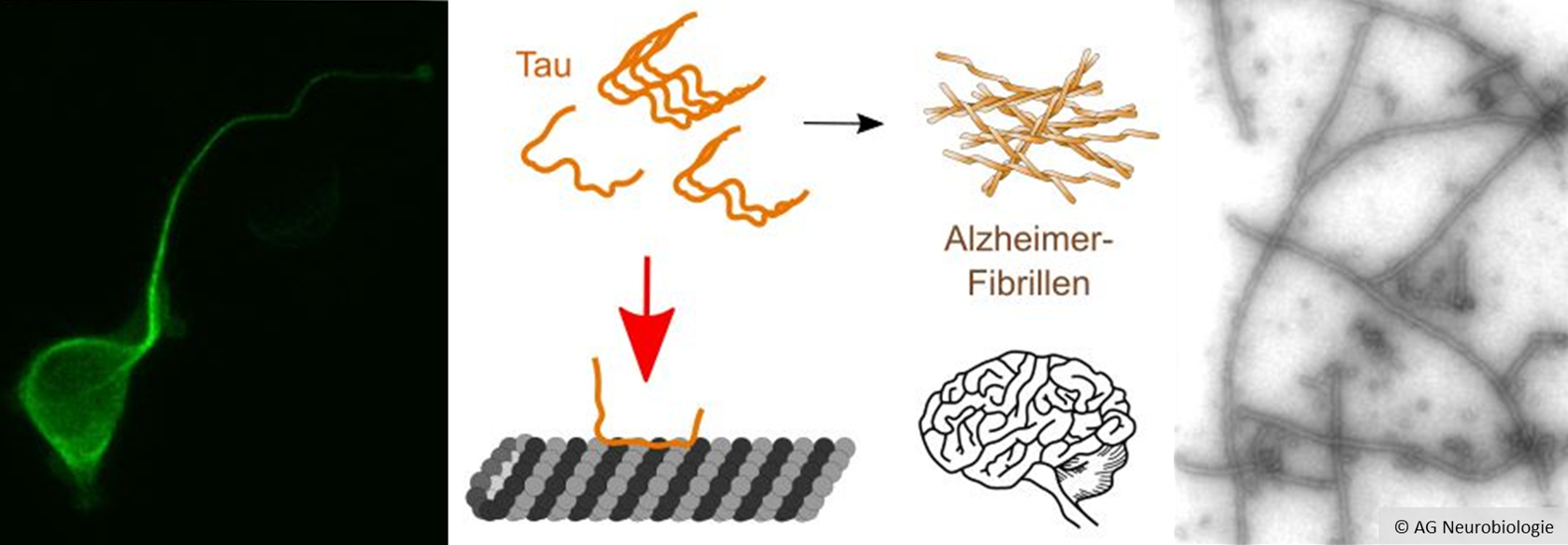Main content
Top content

27.02.2024
What helps in the fight against Alzheimer's? New method allows research in living cells
Alzheimer's disease affects millions of people worldwide - and the numbers are rising. The interest in researching effective drugs is correspondingly high. A team led by Osnabrück biologist Prof. Dr. Roland Brandt (RG Neurobiology) has now developed a method that makes it possible to identify promising substances in living cells. The work has been published in the prestigious scientific journal "Nature Communications".
Alzheimer's disease is a neurodegenerative condition characterised by a progressive deterioration in cognitive performance. A specific molecule plays an important role in its development: the so-called tau protein.
In the neurons of Alzheimer's patients, the tau protein clumps together, which, according to current research, is largely responsible for the neurological degradation processes in the course of Alzheimer's disease. Substances that counteract tau aggregation could therefore prove to be extremely valuable in the fight against the disease. But how can such substances be identified?
The novel imaging method – developed by Osnabrück biologists around Prof. Dr. Roland Brandt together with researchers from Milan and Modena as part of an EU consortium – could help here. The method makes it possible to observe the clumping of the tau protein in living cultured nerve cells – and thus to test which substances counteract this process. In fact, the team has already identified a promising candidate using the method: the researchers discovered that the molecule PHOX15 inhibited aggregation of the tau protein and restored its usual physiological interaction with other components of the cell.
View the publication: Pinzi, L; Conze, C.; Bisi, N.; Torre, G. D.; Soliman, A.; Monteiro-Abreu, N.; Trushina, N. I.; Krusenbaum, A.; Dolouei, M. K.; Hellwig, A.; Christodoulou, M. S.; Passarella, D.; Bakota, L.; Rastelli, G. & Brandt, R. (2024): Quantitative live cell imaging of a tauopathy model enables the identification of a polypharmacological drug candidate that restores physiological microtubule interaction. Nature Communications.
Learn more about the research group Neurobiology







